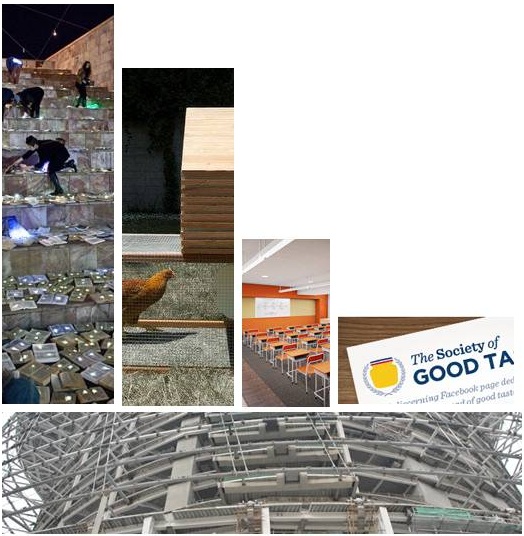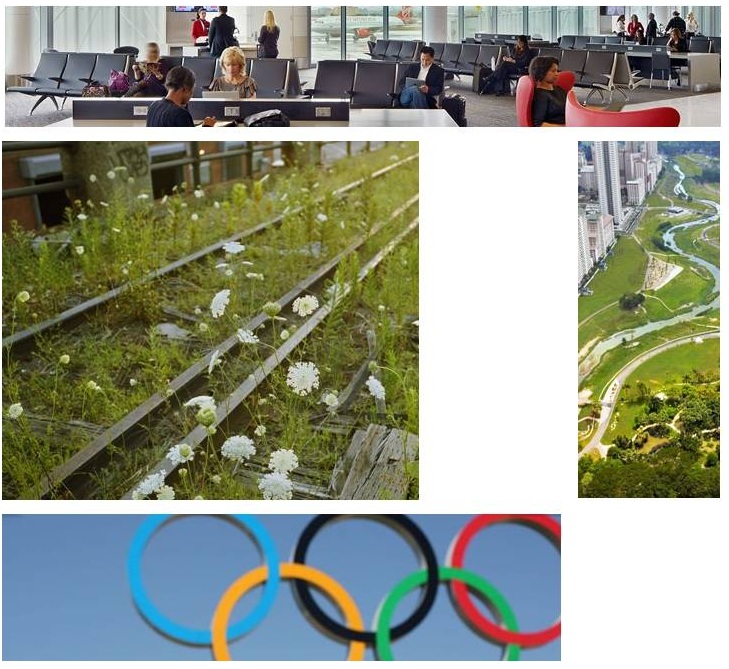 Vancouver bears fruit. HDR reviews Ecology of Commerce. Doyon on resilient communities. Gensler on London's airport infrastructure.
Vancouver bears fruit. HDR reviews Ecology of Commerce. Doyon on resilient communities. Gensler on London's airport infrastructure.
Picking your own apple. Vancouver is looking to add more fruit- and nut-bearing trees to its urban tree inventory. As part of a plan to plant more than 150,000 trees by 2020, the city is considering making food-producing trees a major part of that effort.
Vancouver has announced this plan as cities maintain their tree populations – periodic trimming and culling as needed and not spending the sort of time watching over trees that they'd need to in order to help a fruit crop grow. The city already has an inventory of about 600 street trees that produce fruits and nuts. Another 425 are located in city parks and community gardens.
By Nate Berg
Via Atlantic Cities
Simply replacing is simply not sustainable. Mark Meaders of HDR blogs about the book Ecology of Commerce by Paul Hawken, which explores how business and commerce need to change how they function and operate in order to truly act in a sustainable manner and being concerned with how actions affect future generations.
The book discusses paper companies and their logging activities and the fact that paper companies own more land than any other entity.
“This book has caused me to think differently… One of the things that Mother Nature likes is diversity. She likes a forest that has many different types of trees. Some trees are quick growers, some take a long time, some have leaves year-round, and others have leaves that fall off in the fall.
Now, the problem with the paper companies is that they stop part of this cycle from naturally occurring. They plant specific trees in specific areas—they are not in favor of the diversity of trees. They cut the trees down before they die. The trees don’t help feed the soil. Beetles and other creatures do not come to that area and live in the trees and do their job. Part of Mother Nature’s cycle has stopped. How has this affected other things in that forest?”
Via Blink – Perspectives on Design Blog
Keys to a stronger community. Scott Doyon blogs about the seven keys to supporting the social resilience of our communities.
Doyon says to build strength of your community, especially in these times of limited resources, that the following areas provide the greatest returns: good governance; walkable, connected, mixed-use character; parks and gardens; partnerships; programming; neighborhood-responsive schools; and tree culture.
Via Placemakers and Placeshakers
Planning London’s transport future. Ian Mulcahey, Co-Managing Director of Gensler London, blogs on how many cities are finding challenges with original 1940’s airports which have grown far beyond original expectations of the city planners in the immediate post war period.
Throughout history, access to transportation has been the key to consistent economic expansion. London is yet again at this crossroads. How can it maintain its global trading position without a significant expansion and improvement in its airport hub capacity? The problem for London’s planners is not unique, there isn’t an obvious place to put such a significant and, for many people, disruptive piece of infrastructure
Via GenslerOnCities
Innovative Social Media
The Beauty Inside. Intel and Toshiba teamed up again to create an online video advertising campaign that follows the success of the “Insider Experience, ” which was a groundbreaking and runaway success: It generated over 6 million views in three weeks. Intel and Toshiba were able to create something that audiences hadn't seen or experienced before – it had heavy audience interaction and blurred the lines between branded content and Hollywood filmmaking.
"The Beauty Inside" also puts the audience experience first by creating a premise that automatically throws audiences into the center of the action. One of Intel and Toshiba's goals with "The Beauty Inside" is to reach a younger, hipper audience -- a consumer base that goes on Facebook every day, watches viral videos, and thrives in social media. The campaign captured audience attention by reaching out to them across these social mediums and by making them the star of the campaign.



